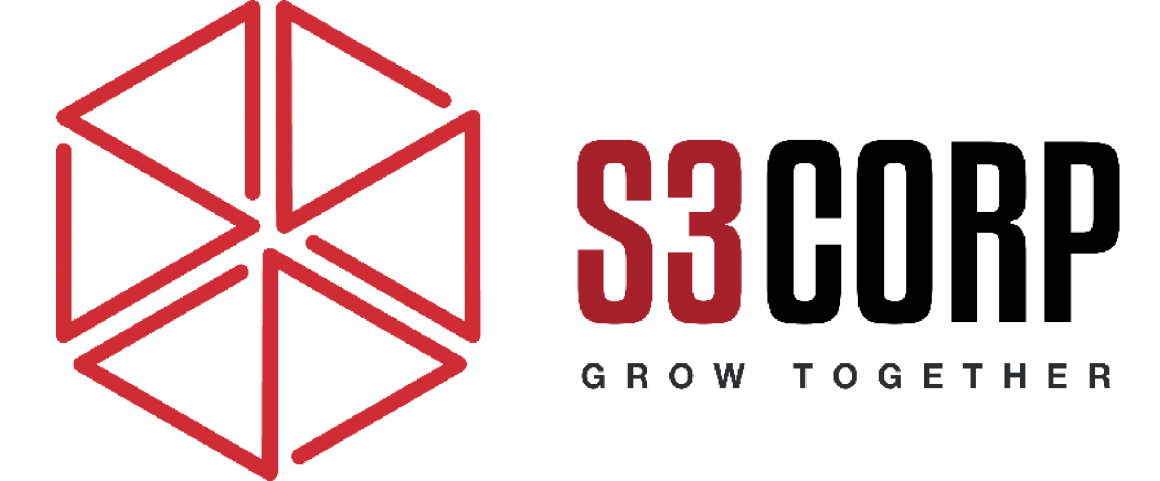Understanding the Software Development Life Cycle
The software development life cycle (SDLC) is the backbone of any software project, providing a clear framework for turning an idea into a fully functional product. It encompasses several stages, each requiring specific expertise to ensure seamless progress. Recognizing where every role fits into this process is crucial for accurate planning, execution, and delivery.
At the outset, the process involves identifying a customer pain point or gap in the market. This step establishes the project’s foundation and ensures the solution addresses real-world needs. A collaborative approach is essential here, with input from developers, managers, and customer-focused teams. Together, they create a comprehensive plan detailing how the software will solve the identified problem.
In many cases, consulting a software outsourcing firm like S3Corp, a leading provider in Vietnam specializing in web and mobile development, can prove invaluable. Outsourcing firms bring a wealth of experience in defining feasibility, estimating budgets, and predicting timelines. Their guidance can pinpoint the specialized roles and technical skills required, streamlining the planning phase and mitigating potential roadblocks.
Once the strategy is in place, the project transitions to the design, building, and testing phases. Testing is particularly critical because it ensures the software performs as intended before reaching users. This is where the software developer engineer in test (SDET) becomes an indispensable asset. Their expertise in automating and refining testing processes guarantees thorough quality assurance, safeguarding the project’s reputation.
What is a Software Developer Engineer in Test?
A software developer engineer in test bridges the gap between development and testing. They are seasoned developers whose primary focus lies in creating automated testing frameworks to identify bugs and performance issues. Unlike traditional testers, SDETs possess a deep understanding of coding and software architecture.
This role originated at Microsoft to address recurring issues with buggy software releases, which tarnished reputations and led to user dissatisfaction. Today, SDETs are pivotal in quality assurance for large-scale projects. They not only streamline testing but also ensure the software aligns with high-performance standards.
SDETs bring a higher level of expertise compared to manual testers, who typically perform repetitive tests that are costly or impractical to automate. Manual testing has its place in limited contexts, but SDETs elevate the process by automating extensive tests. These range from bug detection to performance and stress testing, reducing costs and time while delivering more reliable results.
Key Responsibilities of an SDET
The responsibilities of a software developer engineer in test are extensive, reflecting their unique position within the SDLC. They create automated test scripts to validate software functionality across platforms, including web, desktop, and mobile. This ensures consistency and reliability across all versions.
In addition to automating tests, SDETs respond to user feedback on early software versions. When customers report issues, SDETs develop programs to replicate these problems, pinpointing the root cause and testing solutions. Their ability to handle such tasks showcases their technical depth and problem-solving skills.
Beyond testing, SDETs contribute to performance optimization. They write scripts to analyze resource consumption, stress limits, and overall software efficiency. By doing so, they preempt potential issues, ensuring smooth user experiences even under high demand.
The Impact of an SDET on Project Outcomes
The inclusion of an SDET can significantly enhance project outcomes, particularly in terms of customer satisfaction and operational efficiency. Their contributions ensure software meets customer expectations and operates without glitches.
Unlike manual testers, SDETs have a comprehensive understanding of software systems. Their coding expertise enables them to automate tests that mimic real-world scenarios, uncovering issues that might otherwise go unnoticed. This level of detail not only improves product quality but also accelerates the development cycle.
SDETs also act as advocates for the end user during the testing phase. Their customer-focused approach ensures the software is tailored to user needs, preventing oversights that could alienate the target audience. For businesses, this translates into stronger user loyalty and fewer post-launch fixes.
Finding the Right Software Developer Engineer in Test (SDET)
Finding a skilled software developer engineer in test (SDET) is critical for the success of any software project. This specialized role requires a combination of technical expertise, coding proficiency, and an understanding of the broader software development life cycle. Identifying the right professional can be challenging, especially as demand for experienced SDETs continues to grow. However, by leveraging the right strategies and resources, businesses can secure an SDET who aligns with their project goals and technical requirements.
Challenges in Hiring SDETs
The niche expertise of an SDET makes this role harder to fill compared to more general development or testing positions. An SDET needs to excel in multiple areas, such as writing automated tests, analyzing performance, and debugging issues in complex software systems. This requires a rare blend of skills, combining the technical depth of a developer with the analytical mindset of a quality assurance engineer.
Moreover, SDETs are in high demand, particularly for projects involving intricate platforms like web and mobile applications. This demand often exceeds the supply of qualified candidates, making it difficult for internal hiring teams to find the right fit. Many companies lack the tools or networks to effectively source these professionals, further complicating the process.
Outsourcing as a Strategic Solution
To overcome these challenges, many businesses turn to outsourcing companies that specialize in sourcing top-tier SDETs. Firms like S3Corp, a leading outsourcing provider based in Vietnam, offer access to a deep pool of skilled professionals experienced in diverse software projects. With expertise spanning web, mobile, and desktop applications, companies like S3Corp streamline the hiring process by connecting businesses with SDETs who possess the required technical and domain-specific skills.
Outsourcing offers several advantages. First, it reduces the time and resources needed to recruit in-house. Instead of sifting through numerous applications and conducting extensive interviews, businesses can rely on the outsourcing partner to identify candidates who meet their precise needs. This is particularly beneficial for tight project deadlines, where every day counts.
Additionally, outsourcing firms often provide candidates familiar with international standards and best practices, ensuring a seamless integration into global projects. In the case of nearshore outsourcing, working with a provider in a similar time zone ensures efficient communication and collaboration, vital for roles as integral as an SDET.
Qualities to Look for in an SDET
When sourcing an SDET, businesses should focus on key qualities that align with their specific project requirements. These include:
- Technical Expertise: An ideal SDET must have a strong programming background, with proficiency in languages commonly used for test automation, such as Python, Java, or C#. They should also have experience in tools like Selenium, Appium, or JMeter for automating tests across web and mobile platforms.
- Understanding of Software Development: Unlike manual testers, SDETs are deeply involved in the software development life cycle. They must understand the architecture and logic of the software to identify potential vulnerabilities and write effective test scripts.
- Problem-Solving Skills: Debugging complex software issues requires analytical thinking and creativity. A skilled SDET can identify root causes and propose efficient solutions, saving time and resources.
- Specialized Knowledge: Depending on the project, businesses may need SDETs with expertise in specific domains, such as security testing, performance analysis, or usability testing.
- Communication Skills: As SDETs often collaborate with developers, managers, and other stakeholders, clear and concise communication is crucial. This ensures that feedback loops are efficient and actionable.
The Role of Offshore Providers Like S3Corp
Vietnam has emerged as a key hub for IT outsourcing, offering a talented workforce with expertise in cutting-edge technologies. Companies like S3Corp stand out for the ability to connect businesses with SDETs that meet high standards in web, mobile, and software development.
S3Corp’s approach focuses on understanding the unique needs of each client, ensuring they are matched with SDETs who possess relevant experience and technical proficiency. Our services also emphasize collaboration, providing engineers who work in sync with the client’s team to meet project goals efficiently.
By partnering with S3Corp, businesses can tap into the rich talent pool of Vietnam while enjoying cost-effective solutions. The firm’s reputation for quality and its commitment to client satisfaction make it a trusted choice for sourcing SDETs for complex software projects.
Conclusion
A software developer engineer in test is a vital component of modern software development, ensuring projects are delivered on time, within budget, and with high-quality standards. Their ability to automate tests, analyze performance, and respond to user feedback makes them indispensable in creating reliable, customer-centric products.
Hiring the right SDET is essential for ensuring software projects are completed on time, within budget, and at a high standard of quality. With access to skilled SDETs who understand web and mobile platforms, businesses can enhance their development cycles, improve software performance, and ensure end-user satisfaction.
Partnering with software outsourcing firms, particularly in regions like Vietnam known for their skilled IT workforce, offers a strategic advantage. By integrating SDETs into your team, you can enhance efficiency, reduce costs, and deliver software that stands out in competitive markets. Whether your project involves web or mobile development, an SDET is key to achieving success.





